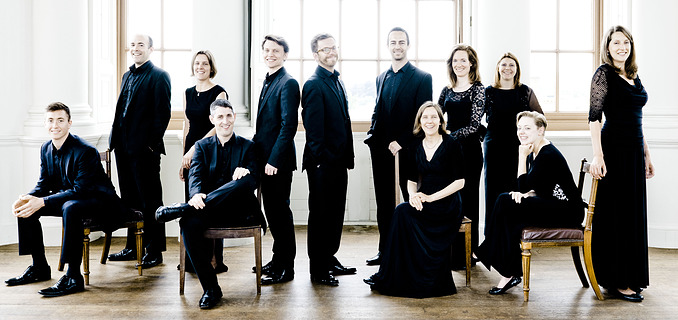The disc opens with a lengthy Latin work epitomizing Sheppard's style: the responsory Gaude, gaude, gaude Maria virgo for Vespers on the feast of the Purification of the Virgin (Candlemas). It radiates joy through its tightly woven counterpoint, shimmering harmonies and daring modulations, with so-called 'gymel' passages where the two florid upper voices divide into four and combine variously with other and the lower voices. Stile Antico's enthusiastic delivery of this technically difficult piece is all the more impressive for its assurance and polish.
The disc's centrepiece and Stile Antico's real test is Media vita, an extended (more than 25 minutes) and highly elaborate six-voice settings of the poignant antiphon 'In the midst of life we are in death' for the office of Compline on third and fourth Sundays of Lent, which also incorporates the Nunc Dimittis ('Lord, now lettest though thy servant depart in peace'). It is one of Sheppard's masterpieces, a profoundly expressive work that immerses the listener in its richly textured counterpoint full of long-breathed phrases, dominated by soaring trebles over the shifting harmonies of the idiosyncratically flowing lower voices and unexpected dissonances...
This is only the second recording of this extraordinary work, preceded by The Tallis Scholars' impressive account way back in 1989... Stile Antico's approach to the work is very different from the Tallis Scholars', from their slightly slower tempo that heightens the work's mournful solemnity to their fervent expression, full of personal human anguish amidst the elaborate artifice of Sheppard's writing. Like the Tallis Scholars, they maintain perfect ensemble and unanimity of tone, but while the older choir favoured a perfectly smooth blend of the voices and a somewhat coolly crystalline tone, Stile Antico do not try to hide the differences between their 14 voices... Having women rather than countertenors also gives Stile Antico a warmer sound. Overall, the more distantly recorded and monumental Tallis Scholars, for all their sophisticated shaping of line and their trebles' flawless purity and seemingly effortless delivery, sound slightly soulless next to Stile Antico, whose particular qualities also benefit from the technological advances in audio engineering since 1989.
On a conventional CD player, Stile Antico's recorded sound is detailed yet natural within the not too resonant acoustic of All Hallows Church, Gospel Oak in London. Playing the high definition layer of the disc on a dedicated SACD player reveals the new medium's particular suitability for choral music: the voices have even greater immediacy, with a vivid sense of the space around them.
Throughout their programme, Stile Antico perform with impressive technical proficiency and expressiveness...


 Back to List
Back to List